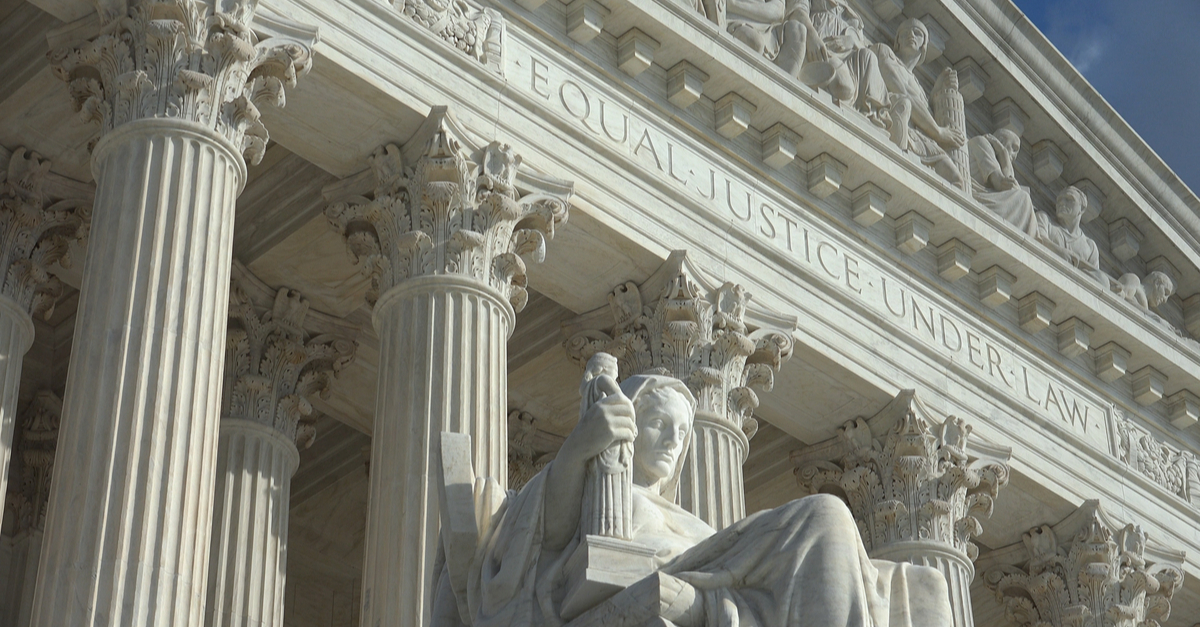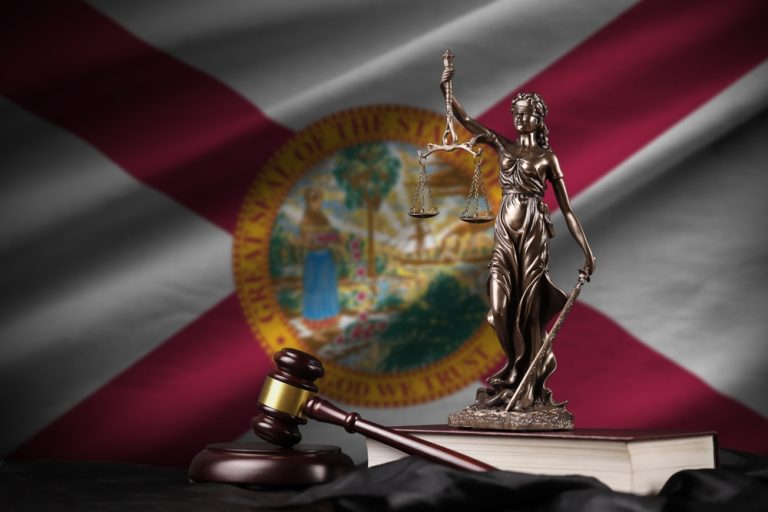SCOTUS Rejects OSHA “Vax or Test” Rule, But Allows Narrower Healthcare Mandate
SCOTUS Rejects OSHA “Vax or Test” Rule, But Allows Narrower Healthcare Mandate
On January 13, 2022, the Supreme Court issued rulings in two consequential cases involving COVID-19 vaccination mandates enacted by two different Federal agencies, one from the Occupational Safety and Health Administration (“OSHA”) and the other from the Department of Health and Human Services acting through the Centers for Medicare and Medicaid Services (“CMS”). In the first case, National Federation of Independent Business v. OSHA, Nos. 21A244, 21A247, 585 U.S. ___ (2022), the Court issued a stay of OSHA’s enforcement of a rule promulgated by the Secretary of Labor as an emergency temporary standard which required employers with over 100 employees to ensure that their employees were vaccinated or to undergo weekly testing and to wear a face covering while at work. Conversely, in the second case, Biden v. Missouri, Nos. 21A240, 21A241, 595 U.S. ___ (2022), the Court decided to allow enforcement of rule requiring healthcare facilities that receive Medicare and Medicaid funding to ensure that their staff—absent an exemption for religious or medical reasons—are vaccinated against COVID-19.
The OSHA Rule/Background
In September 2021, President Biden announced that the Department of Labor would issue an emergency rule requiring all employers with at least 100 employees to ensure their work forces are fully vaccinated or to show a negative test at least once a week. Two months later, OSHA issued an emergency temporary standard, 86 Fed. Reg. 61402, designed “to protect unvaccinated employees of large employers (100 or more employees) from the risk of contracting COVID-19 by strongly encouraging vaccination.” The emergency temporary standard mandated that covered employers must develop, implement, and enforce a mandatory COVID-19 vaccination policy or instead adopt a policy requiring employees to either get vaccinated or elect to undergo regular COVID-19 testing and wear a face covering at work in lieu of vaccination. The emergency standard was enacted under 29 USC § 655(c)(1), which allows OSHA to promulgate emergency temporary standards without going through the procedural mechanisms normally required for OSHA to enact a rule, i.e., notice, comment, and the opportunity for a public hearing.
Numerous States, businesses, and non-profit organizations challenged OSHA’s rule in courts across the country. The Court of Appeals for the Fifth Circuit issued a stay of the enforcement of OSHA’s rule in one of these cases. However, when all cases involving challenges to the rule were consolidated before the Sixth Circuit, that court lifted the stay and allowed OSHA’s rule to go into effect. Several applicants, including several States and the National Federation of Independent Business, then sought emergency relief from the Supreme Court, arguing that OSHA’s rule exceeded the agency’s statutory authority and seeking to have the rule stayed pending the outcome of the consolidated cases.
SCOTUS Decision
In a 6-3 decision with the justices divided on ideological lines, the Court found that the applicants were likely to prevail on their argument that the OSHA rule was beyond the agency’s statutory authority, and stayed OSHA’s enforcement of the rule. The majority opinion was written per curiam, but was likely penned by either Justice Kavanagh or Chief Justice Roberts, as fellow conservative Justices Gorsuch, Thomas, and Alito wrote a concurring opinion and the liberal Justices Breyer, Kagan, and Sotomayor dissented. The majority opinion focused on the text of the statute from which OSHA derives its rulemaking authority while the concurrence focused on the differences in the power to regulate public health between the Federal and State governments, with the latter having more power to do so. The dissent focused on the grave dangers of the COVID-19 pandemic and disagreed with the assertion that the rule was a vaccine mandate and that OSHA lacked statutory authority to enact the rule.
Administrative agencies like OSHA, the majority noted, only have the authority that Congress has expressly provided via statute. Considering that the rule at issue would affect over 84 million Americans and require them to either obtain a COVID-19 vaccine or undergo weekly testing at their own expense, the majority reasoned that Congress’s authorization for such a rule must be clear in the text of the statute from which OSHA derives its authority. In describing the rule as a vaccine mandate, the majority also pointed out that the rule does not require employers to allow for the testing alternative to vaccination and also that the rule requires that unvaccinated employees who do not comply to be “removed from the workplace.” Thus, the majority determined that the primary question before the Court was whether the Occupational Health and Safety Act—the Act from which OSHA derives its rule making authority—plainly authorizes a nationwide vaccine mandate for employers.
In answering this question in the negative, the majority focused on the text of the Act itself which empowers the Secretary of Labor to establish “workplace safety standards, not broad public health measures” and which states that OSHA is charged with regulating “occupational” hazards. Essentially, although COVID-19 is a risk that occurs in many workplaces, the majority found that it is not an occupational hazard, but rather it is a public hazard that exists all areas of life. Permitting OSHA to regulate the hazards of daily life would expand its regulatory authority beyond what was authorized by Congress. This, combined with the fact that Congress had not expressly authorized a vaccine mandate—in fact, the Senate had voted against it—meant that OSHA likely lacked the statutory authority to enact the rule.
For these reasons, the Court found that it was likely that the applicants would succeed on the merits of their argument that the rule was unlawful in the Sixth Circuit, and issued a stay on OSHA’s enforcement of the rule pending the outcome of the case at the lower court level.
The CMS Rule
In the second closely watched case regarding vaccination mandates, the Court went the opposite direction from its ruling on the OSHA rule, deciding to stay injunctions that enjoined enforcement of a rule by the Secretary of Health and Human Services and Medicare and Medicaid programs that required staff at participating facilities be vaccinated against Covid-19, unless exempt for medical or religious reasons (“the CMS rule”). This decisions represents a win for the federal government, which has faced continuous challenges to its various efforts to require vaccinations against COVID-19.
Background
This case focused on an interim final rule promulgated in November 2021 by the Secretary of the Department of Health and Human Services (“HHS”) that required facilities participating in Medicare and Medicaid ensure their covered staff were vaccinated against COVID-19. Affected facilities include hospitals, outpatient rehabilitation facilities, skilled nursing facilities, ambulatory surgical centers, and long-term care facilities. Failure to comply with the CMS rule means monetary penalties, denial of payment for new admissions, and eventual termination of a facility’s participation in the programs. The CMS rule was issued on an interim basis based on the Secretary’s determination that vaccination was the best means of prevention against COVID-19, and that any further delay would endanger patient safety given the then-spread of the Delta variant.
After the CMS rule was announced, two groups of States filed actions challenging the rule. Two different district courts enjoined the CMS rule and, upon review, the respective courts of appeal denied the government’s motions to stay enforcement of the injunctions. The government sought review from the Supreme Court, which granted expedited review on the matter and heard oral argument the same day it heard argument on the OSHA rule.
SCOTUS Sides with the Government
In a per curiam opinion representing five of the nine justices, the Court noted that “perhaps the most basic” function of HHS “is to ensure that the healthcare providers who care for Medicare and Medicaid patients protect their patients’ health and safety.” It went on to note that COVID-19 is a “highly contagious, dangerous, and—especially for Medicare and Medicaid patients—deadly disease.” Thus, the Court found the CMS rule “fits neatly within” HHS’s broad statutory grant of authority that allows it to condition receipt of funds with compliance with requirements necessary to protect the interest of individuals receiving services. “After all, ensuring that providers take steps to avoid transmitting a dangerous virus to their patients is consistent with the fundamental principle of the medical profession: first, do no harm.” Not only has HHS historically imposed such requirements, but, as the Court commented, “the Secretary routinely imposes conditions of participation that relate to the qualifications and duties of healthcare workers themselves,” justifying “these sorts of requirements by citing his authorities to protect patient health and safety.” Simply put, the Court held “there can be no doubt that addressing infection problems in Medicare and Medicaid facilities is what [the Secretary] does.”
The Court also noted that this rule was overwhelmingly supported by healthcare workers and public health organizations, which “suggests that a vaccination requirement under these circumstances is a straightforward and predictable example of the ‘health and safety’ regulations that Congress has authorized the Secretary to impose.” The Court further dismissed the remaining arguments made by the challengers, i.e., that the rule was arbitrary and capricious, that HHS failed to consider potential staffing shortages the CMS rule may cause, and that the data HHS relied upon was faulty. The Court similarly dispensed with claims that the Secretary did not provide “good cause” for bypassing the traditional notice-and-comment period—the Secretary’s finding that immediate promulgation would reduce infections ahead of the winter flu season satisfied this—as well as other complaints about HHS’s purported failure to abide by administrative procedures. Two dissents were authored by Justices Thomas and Alito. Justice Thomas argued the government had not established that HHS was statutorily empowered to impose a vaccine mandate, while Justice Alito stressed that even if the government had the authority to impose a vaccination mandate, it impermissibly bypassed traditional administrative procedures.
Takeaways – Both Cases
The Supreme Court’s decision in National Federation of Independent Business v. OSHA means that, for now at least, employers with greater than 100 employees are not federally required to ensure their employees are vaccinated against COVID-19 or implement a testing and face covering policy. The Supreme Court’s decision likely does not impact or overturn local or State vaccine mandates for employers. In fact the concurrence from Justice Gorsuch likely supports the idea that States can implement such measures if they choose. The decision also does not prevent private employers of any size from creating their own vaccine and/or testing requirements, assuming they also comply with other State and Federal laws.
As for Biden v. Missouri,the Supreme Court’s ruling means the lower courts’ orders that enjoined enforcement of the CMS rule are now stayed. The case will return to the lower courts, where the parties will continue to battle over the rule’s merits. While that takes place, health care workers at facilities participating in Medicare and Medicaid—which is the vast majority—must now comply with the CMS rule. The federal government has estimated this rule covers more than 10 million workers. Per guidance issued by the government, staff must receive one dose by January 27 and be fully vaccinated by February 26. Further, full compliance is expected, lest penalties be incurred. And while the Supreme Court’s ruling merely means the CMS rule will be implemented and enforced while the ongoing legal challenges play out in the lower courts, for now health care providers and others covered by the rule must abide by it.







